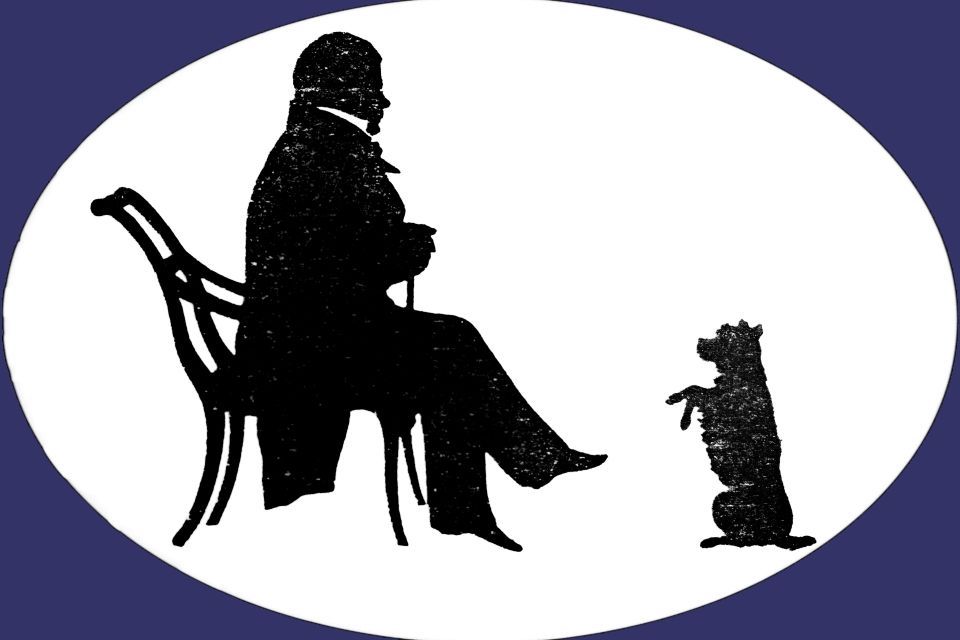Sir Walter Scott and Scotland’s First Lending Library
Thursday 7th April 2016
Summary of the Talk:
Lara Haggerty's talk explores connections between Sir Walter Scott and Innerpeffray, Scotland's first lending library. Haggerty presents a mix of historical background, fascinating connections, and intriguing anecdotes. The talk opens with the founder of the library, David Drummond, 3rd Lord Madertie, who established the library in the 17th century in a small and rural area. Haggerty draws attention to his wide-ranging interests, evident from the collection of books he left behind.
David Drummond was a landowner, well-connected, and keen on maintaining a diverse library that included theology, history, philosophy, travel, and military books. His legacy endures through the library, which was later expanded by his great-nephew, Robert Hay Drummond. The library's history is marked by incremental growth, especially during the 19th century, with novels—including Scott’s works—becoming increasingly popular.
The library’s connection to Scott is also highlighted through several anecdotes. One example is the armchair belonging to Scott, which was later passed down to a trustee of Innerpeffray. There’s also mention of a tutor, Rev James Mitchell, who borrowed books from Innerpeffray in the 18th century and read Scott’s works. In the 19th century, Scott’s novels were popular among borrowers, and the library holds many copies of his books, some of which have been borrowed extensively.
Notably, the library also received a major donation in recent years from American bibliophile Janet St Germain, who gifted 400 Scottish First Editions, including works by Scott. This generosity contributed to the enrichment of the library's collection. Among these, a signed edition of The Young Chevalier, bearing Scott’s signature, is a prized possession.
Key Points of Interest:
- David Drummond’s Legacy: Drummond, a pivotal figure in the library’s establishment, had a diverse and eclectic book collection, demonstrating an early interest in broad intellectual pursuits. His creation of a lending library in a remote area was revolutionary at the time.
- Scott’s Influence: Scott’s novels were well-loved by Innerpeffray borrowers, with Waverley being particularly popular. The library’s records show frequent borrowing of Scott’s works during the 19th century, revealing his deep influence on Scottish reading culture.
- The Armchair Connection: A notable artefact in the library is an armchair that once belonged to Scott, highlighting a personal connection between the author and the library. It was passed down through the Haldane family, who had ties to Scott.
- The Gift from Janet St Germain: The donation of 400 Scottish First Editions, including works by Scott, represents a significant boost to the library’s collection. This donation exemplifies the ongoing interest in preserving Scottish literary heritage.
- Historical Significance of Innerpeffray: The library’s unique place in Scotland’s literary history, as both a lending library and a repository of Scottish literature, remains its enduring legacy. Though there is no definitive evidence that Scott visited, his works were well represented and beloved by those who frequented the library.
The talk illustrates how Innerpeffray is not only a library but a living connection to Scotland’s literary past, especially through its relationship with Scott.
Download the [Transcript]
(Unfortunately due to a technical issue there is an no audio until after the first 17minutes)
Download the [transcript]
Introduction by Alasdair Hutton:
The Library of Innerpeffray, located in beautiful rural Perthshire, was Scotland’s first free public lending library founded in 1680. It has a collection of some 5000 books, covering five centuries and an amazing register of borrowers which is a history of local reading from 1747 to 1968.
The thirty first Keeper of the Books at Innerpeffray is one of Scotland’s brightest young librarians, Lara Haggerty, who not only looks after the books but also curates exhibitions, markets and promotes the library as well as conducting guided tours and managing her brilliant team of volunteers. She is also is also a fundraiser, which is crucial for an independent organisation, and she looks after all the day to day business.
Lara earned an Honours degree in English Literature and Theatre from the University of Glasgow and spent her early career in the arts, mainly in theatre management, and then in a local authority advising schools on arts and heritage before she went to Innerpeffray.
But perhaps of closest interest to us is the amazing collection of Scottish First Editions which Innerpeffray has been gifted by the American bibliophile Janet St Germain which includes a collection of Sir Walter Scott first editions.
I found Innerpeffray fascinating when I visited it some time ago and I am sure those of you who have not been there will also find it a remarkable experience. So, to tell us a lot more about the collection and her work with it I am delighted to welcome Lara Haggerty.
Lara Haggerty has been Keeper of Books at Innerpeffray, since 2009. The Library is run by a charity: The Innerpeffray Mortification and Lara works closely with the Governors and manages a team of volunteers to bring a wide audience of visitors to Innerpeffray including running a range of events. The Library also collaborates with the University of Stirling (amongst others) to support students.
Synopsis: Two icons of Scottish history, one of its greatest authors and its first free, public lending library, come together: with six connections between the two. For this talk Lara shared the background history to the foundation of Innerpeffray’s library in 1680, and a selection of books to illustrate the Founder’s collection. Connections between the Library and Scott include the role of the Haldanes of Gleneagles, Scott’s tutor James Mitchell and the popularity of Scott’s work with borrowers at Innerpeffray.


